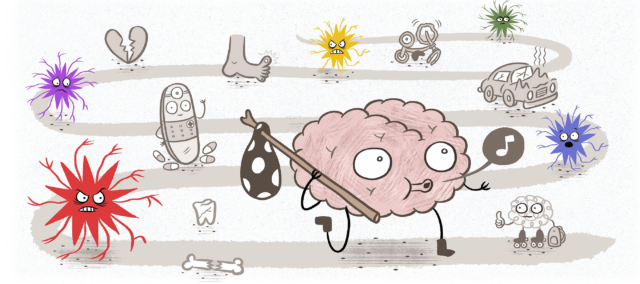
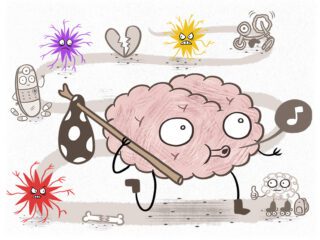
Part One: The Basics of Pain
Even though it’s probably the most universal human experience, most of us can’t really answer the question “What IS pain?” To control something, we need to understand how it works. Curious? Read on!
What is pain?
To answer WHAT pain is, you have to start with the “doctor speak” and then translate that to human speak (don’t worry…we are here to help with that!). According to the very smart experts of the International Association of the Study of Pain, pain is “an unpleasant sensory and emotional experience associated with, or resembling that associated with, actual or potential tissue damage. ” Yeah, we know…it’s not exactly the easiest to understand.
Thankfully, they do go on to explain themselves a little bit more by breaking it down, and we’ve done you the favor of translating that into words people actually use. You can check out a cool slideshow about that here. The core message is that pain is a physical and emotional experience that happens when our body is being or might be damaged.
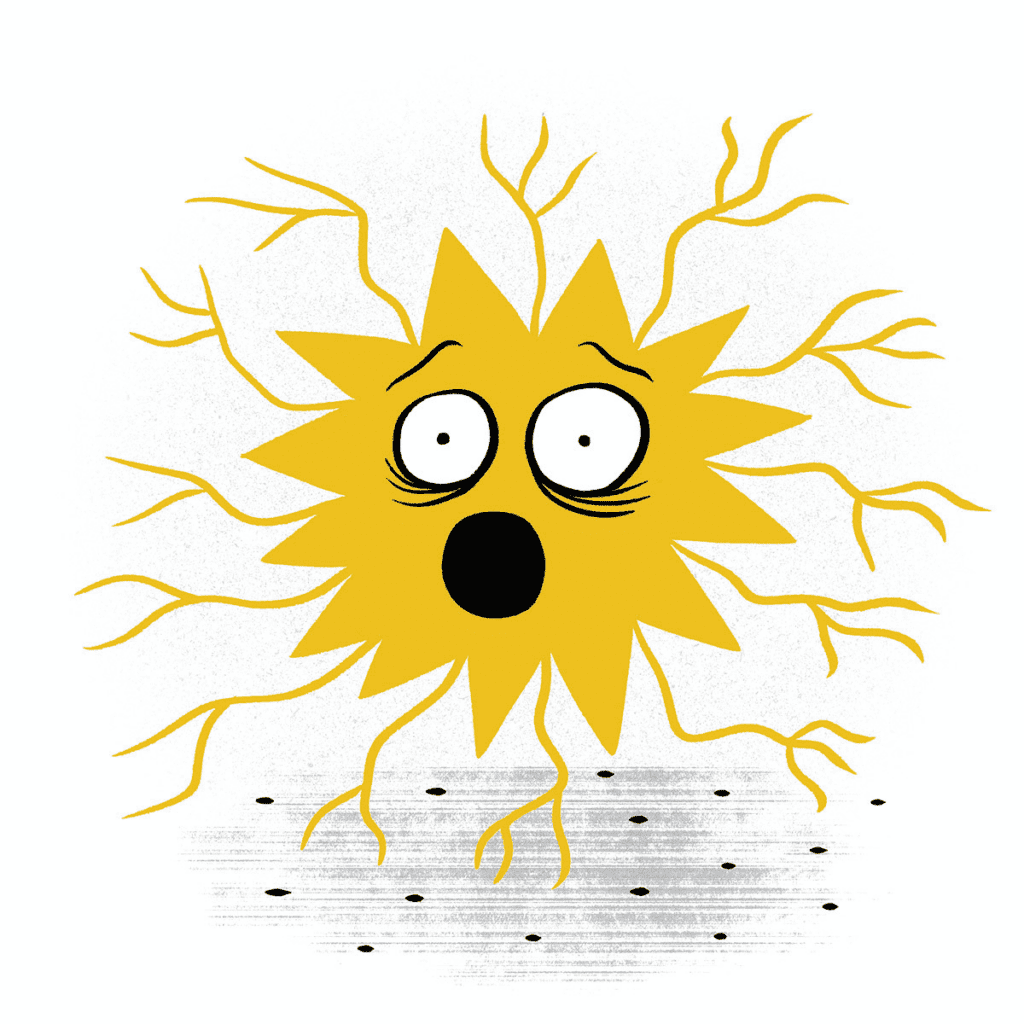
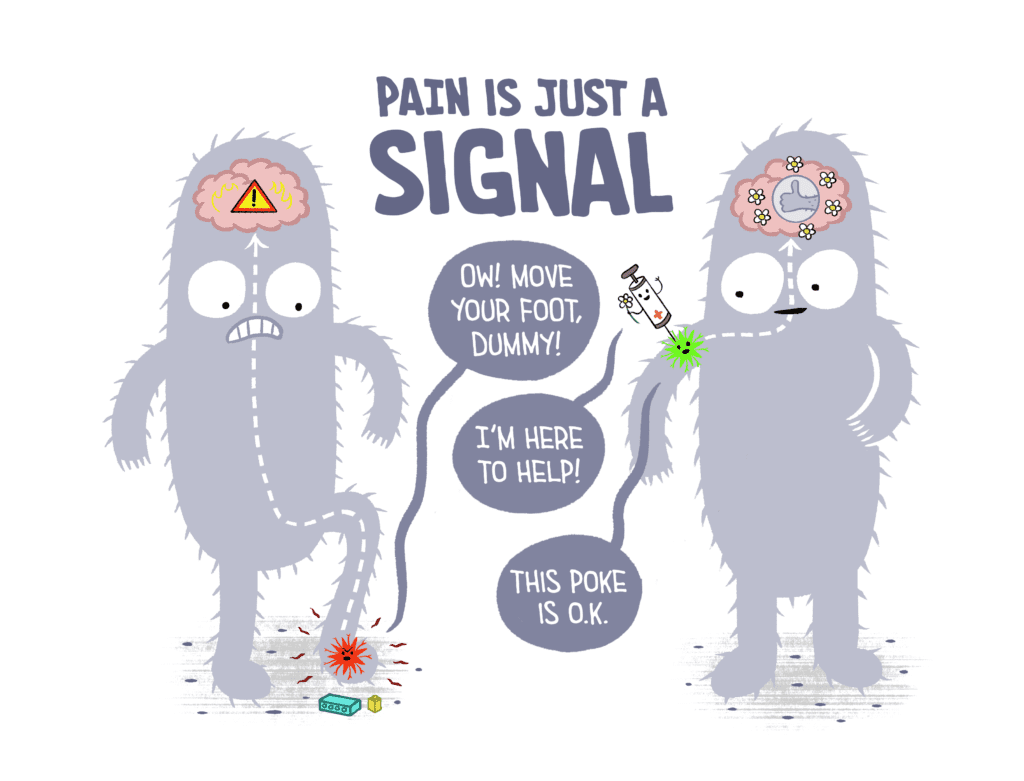
How it works
The next VERY important fact to know (and seems weird but is true): pain actually happens IN your brain. For you to experience pain as you know it, a signal from the body has to actually reach your brain. What happens next (and how it feels to you) depends a lot on what is going on in your brain (and body) at any given time. Understanding this is pretty darn key to managing all types of pain.
Also weird-but-true: pain is actually REALLY helpful. In fact, it’s why we’ve survived as a species this long. Pain is your body’s alarm system letting you know that something MIGHT be wrong, and that you need to pay attention in case you need to do something to keep yourself safe or prevent injury (like stop stepping on a Lego!). This is really useful if, say, we have appendicitis or break an arm, and we need to get the doctor to help us out.
The problem is that the system sometimes sends that signal when it ISN’T needed or helpful. This is what happens during medical procedures, which are actually done to HELP us stay healthy. There isn’t any danger, which means that pain signal is useless (and annoying). It’s also a big issue in chronic pain, when that pain signaling system can actually become the problem. This short video explains it with even cooler graphics!
Why does it matter?
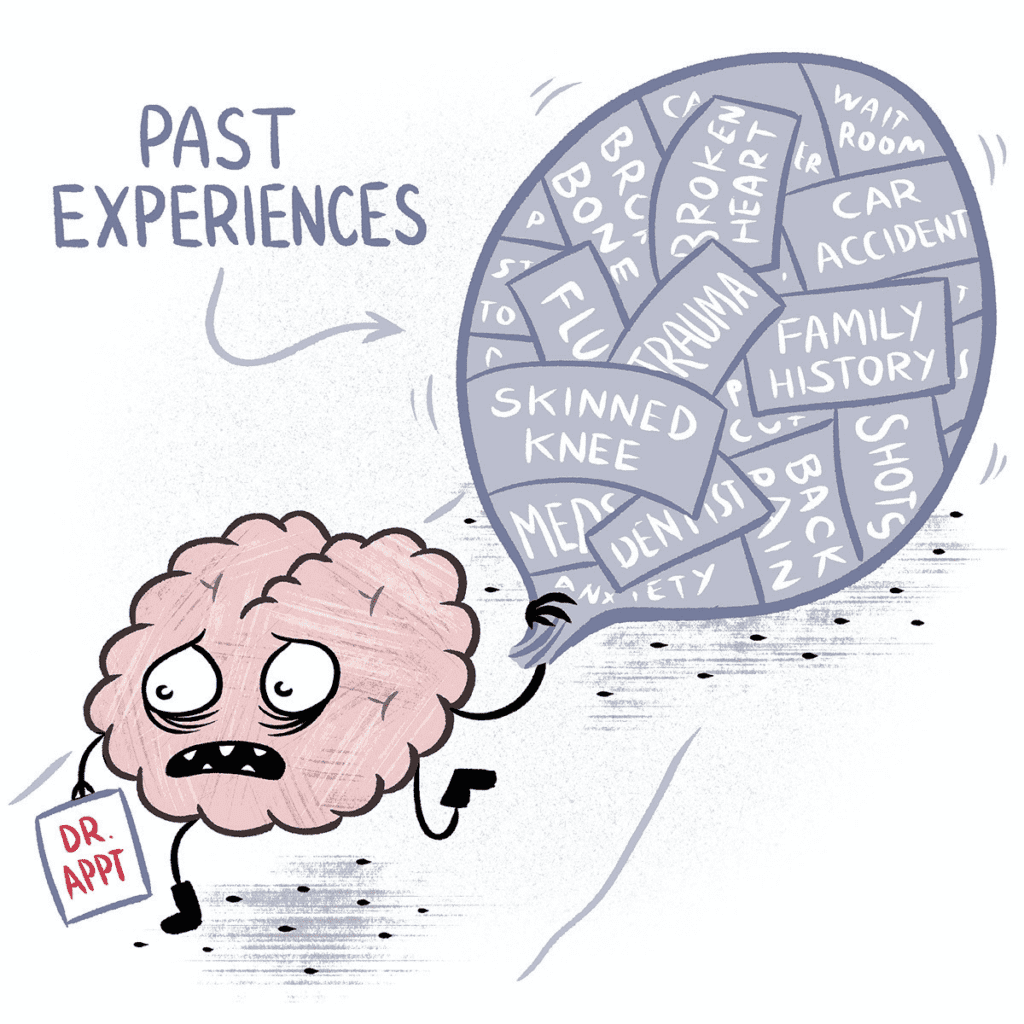
Turns out that poorly managed pain is about a lot more than a hard few minutes at the doctor’s office or a rough few days after surgery. Those experiences are not only avoidable, but have long term consequences for everyone involved. Doing a good job of managing all types of pain means preventing unnecessary suffering in the now, and avoiding bigger problems down the road. We don’t want anyone to learn to be afraid of the doctor or make medical decisions based on that fear. Good pain management skills allow you to feel more powerful and control when it comes to your health. And that’s true whether you are two or 102.

Next up: Let us show you how understanding the three parts of the pain experience can be a game changer!